2015 NFL Draft: Who Are the Top 8 Late-Round Prospects? – Bleacher Report We’re now in the homestretch of NFL draft season. With about six weeks until the big day, you’ve probably heard enough about the top 100 players in the class. The way the draft is covered is almost like a reverse pyramid. About half of the content throughout the year is based around the first-day prospects, then the next half is spent on the Day 2 players and, finally, the rest is exhausted on the Day 3 and undrafted-free-agent types. More players will be taken on Day 3 of the draft than the first two days combined, though, and it’s much harder to land a quality player after the top 100 picks. Most general managers can hit fairly consistently on the first two days of the draft, but Day 3 is really where the good and poor teams separate themselves. Who’s going to find the next Josh Sitton, Antonio Brown, Kyle Williams or Elvis Dumervil? We can’t predict team fits that far down the line, but we can see who on paper should be a plus value in early May. There are eight players who stand above the rest in this aspect. Up until his last year in college, Shaquille Riddick played football for Gardner-Webb. After dominating that level of competition, he moved up to the FBS as a graduate transfer, playing his senior year at West Virginia without having to sit out a season. At a school-listed 6’6″, the former FCS All-American received high praise entering the year. West Virginia’s defense is an odd one, though. Because they play a lot of 3-3-5 football, Riddick was thrown on the line of scrimmage into what was essentially a 3-4 defensive end’s role. The problem with that is that he’s an edge rusher. Much like Bruce Irvin in the past, he was severely miscast, and it hurt his chances to get on the field despite the fact that he was one of the best 11 defenders on that Mountaineers roster. Drafting Riddick will take some projection. You’re either looking at this lower-level college tape from Gardner-Webb and trying to project that to the professional level, or you’re watching him as a miscast player against Power Five opponents. On paper, though, as Zach Whitman of Three Sigma Athlete points out, he’s not too different from Randy Gregory, the pass-rusher from Nebraska who has people looking for him to come off the board in the top five in April. Let’s try that again: the Shaq Riddick and Randy Gregory athletic comp. pic.twitter.com/3cKwnlavJo — Zach Whitman (@zjwhitman) March 13, 2015 To me, that’s well worth the risk in the later rounds. Riddick’s West Virginia career might not have warranted a combine invite, but his NFL career has the potential to make 31 teams regret overlooking him. The economics of big bodies in football essentially dictate that if you can play on the defensive line, then you will. This is why defensive linemen, by and large, are more athletic than their offensive counterparts. This is also why when defensive linemen transition to the offensive side of the ball, like the Seattle Seahawks’ J.R. Sweezy or the University of Pittsburgh’s T.J. Clemmings, a hidden gem can be unearthed relatively quickly. Ellis McCarthy went to UCLA as a blue-chip nose tackle prospect. Despite playing in a 3-4 defense, which suited his strengths, he needed to be kept on a pitch count and rarely started games. Still, he declared early for the NFL draft as a junior. It’s rare for a big, athletic body to emerge from the college level, especially in today’s spread game, so he was still being viewed as a potentially draftable defensive lineman in the eyes of many at his pro day. His pro day is where the narrative of his draft process changed, though. Instead of going through defensive-line drills, he participated as an offensive lineman. In that role, he’s not asked to penetrate as much as he’s asked to absorb force, which could leave more gas in his tank as a full-time player. He clearly flashed the talent needed at the college level, but he never put it all together. In Seattle, the staff noticed Sweezy as a raw talent and smoothly converted him into a starting player on offense. There’s no reason why McCarthy can’t do the same, but it’ll take some elbow grease from everyone involved. Cody Fajardo is a highly touted quarterback out of Nevada who shows athleticism but has physical limitations. On paper, you’d say he’s a lot like the Cleveland Browns’ first-round pick of Johnny Manziel, but he doesn’t have the “it factor” or wrist action to get the ball just where it needs to be. Manziel didn’t have the smoothest transition to the NFL, and that may have teams second-guessing Fajardo’s fit at the professional level. He doesn’t have the speed (4.63 40-yard dash time) to really compete as a running back, boundary cornerback or boundary receiver, but he may have a future as a skill player inside the boundary. We’ve seen receivers like Julian Edelman make an impact in the league from the slot after playing quarterback in college. Fajardo could give the slot a shot as either as a cornerback or receiver. Both of his agility drills tested in the top quarter of quarterbacks, according to Mock Draftable, and that’s probably the best drill on which to measure slot players, whose jobs are to change direction with short-area quickness. He could also take a swing at playing safety, like Eric Crouch once did. Crouch won the Heisman in Nebraska’s option offense but was drafted as a receiver because of his arm strength and size. A couple years into his career, he switched to the defensive side of the ball as a safety. There are success stories for Fajardo’s body type at all sorts of positions in the NFL, but not one of those positions is quarterback. Because of that, he’s a better bet to stick in another role than the one that he played in college. He’ll get a long look in the NFL because of all his possible sticking spots, and his versatility warrants a selection. Max Valles first took a stop at the Fork Union Military Academy before joining the Virginia Cavaliers football team. Because of that, his three years removed from high school have passed, so he has served the mandatory time required, per league rules, to declare for the NFL draft, though he only spent two seasons at the NCAA level. Recruited as a tight end at Fork Union, Valles’ first year at Virginia went by mostly with him a situational pass-rusher, but his 2014, highlighted by 9.5 sacks and 12.5 tackles for loss, was his breakout year. When you look at Valles’ frame, he looks like a sophomore. Even if a team drafts him, there’s not a very good shot that he’s going to be a contributor early on. He’s best as a healthy scratch on a 53-man roster or a practice-squad player for a year while his body fully develops. If he does grow and fill out his 6’5″ frame, there are high hopes for him as a professional. Recent history hasn’t been great for edge-rushers who were converted from pass-catchers. We’re only a couple of seasons removed from Dion Jordan being a top selection. Jordan now looks like a bust because he was thrown into the fire in a role that he wasn’t suited to play coming out of the University of Oregon. Valles can face the same fate if he’s told to fly too soon. He’s going to take patience but could be a premier pressure-creator in 2017 or 2018 if a team willing to bear the early growing pains. Over the past decade, the safety position has drastically changed. Before, there was a feeling that you could just pick up a safety from anywhere, as they were abundant, similar to how the media currently discusses running backs. Through various rule changes, though, the league’s offenses now look much different, forcing the old strong-safety role back to the deep third to defend pass-first opponents. This is unfortunate for some college prospects, as they would have fit better in the 2005 draft than the upcoming 2015 one, but not all hope is lost. Bernard Pollard was drafted in 2006 and has since started for four different teams in a “box safety” type of role. In Seattle, Kam Chancellor is an All-Pro player in the same mold. It’s not that they’re extinct, but they don’t fit defenses without a talented free safety to pair with, and those might be the rarest assets in the league at this point. If a team should find itself with a quality free safety, though, Ibraheim Campbell is a great complement. Campbell was one of the strongest tacklers in the country last season with the Northwestern Wildcats. He’s not amazing in coverage, but he does enough to get by if he has that second man to complement him. He’s not for everyone, but he could be a “box safety” starter at the NFL level. Nick Marshall is one of the more interesting prospects in this class because he was all over the college football world as a quarterback but projects to a completely different position at the professional level. He started his career as a cornerback at the University of Georgia but was suspended for a violation of team rules. He then went to Garden City Community College, this time as a quarterback—the position that he played in high school. From there, Marshall transferred to Auburn as a quarterback and became the starter, leading them to the BCS National Championship game in his first year, a huge momentum shift from the 3-9 season that the Tigers had just before he was added to the roster. His arm isn’t strong enough to pass at the next level, though, and his 6’1″ height ranks in the bottom-four percentile for quarterbacks, according to Mock Draftable. That height, however, isn’t poor for a cornerback, the position at which he started his college career in the first place. Instead, his athletic comparison, once again per Mock Draftable, at that position links him to the likes of Chris McAlister and Antrel Rolle, who have each succeeded at the NFL level. Another player, Jerick McKinnon, made a similar transition last year, except to running back. McKinnon wound up being a third-round selection, but he was an option quarterback at Georgia Southern, which is essentially a running back anyway. Marshall should be available late, but he can also be a quality starter down the line. Austin Hill was once considered one of the best pass-catchers in college football. In 2012, he was an All-Pac-12 player as a slot receiver, vaulting him into the upper echelon of athletes as just a sophomore. He totaled 81 receptions for 1,364 yards and 11 touchdowns, a huge impact for a young slot player. A comparison to a player like Greg Jennings wasn’t out of the question. Then, as a junior, Hill suffered a knee injury and had to miss the entire 2013 season. From there, it became a big question as to whether the twitchy athlete would ever play at full force like he once did before. In his absence, other Arizona receivers pushed him down the depth chart, and as a redshirt senior, he only tallied 635 yards and four scores—a solid impact, but less than half of his totals from two years prior. He then got an invite to the East-West Shrine Game, which many consider to be the second-best offseason showcase behind the Senior Bowl. One has to assume that he was brought there based on his impact during his pre-injury seasons. If Hill hadn’t missed a year, and he hadn’t been forced down the lineup, what could his college career have looked like? Everyone in the NFL level gets injured at some point. Hill had the potential to be an early selection, but because of circumstances that he couldn’t control, he might slip to undrafted free agency. When you’re talking about late-rounders, you’re talking about guys who are fringe roster players or practice-squad bodies. Hill has the potential to be much more than that. Even in late August, most college football fans couldn’t tell you about Blake Sims. It was assumed that Jacob Coker, a highly touted transfer quarterback from Florida State who went toe-to-toe with Jameis Winston, would win the Alabama starting quarterback gig. But it was Sims who was announced as the starter for 2014—his senior year, in which he earned a second-team All-SEC selection. Sims is on the shorter side, coming in at 5’11″—around Russell Wilson‘s height. Wilson, even though he was virtually flawless in his last year at Wisconsin, was a third-round selection largely because of that one single factor. Sims is by no means Wilson. His home and away splits are very telling of how raw and prosperous he can be at the same time. Still, the two passers show some similarities. If Sims can be added to a misdirection system—like Seattle, Philadelphia or Miami—he has a shot at becoming a talented dual-threat quarterback in the future. He’s nowhere near ready right now, but he can compete for the job behind the starter from day one. Most quarterbacks who are drafted in the last two rounds end up sticking on a practice squad early in their careers, not the active roster, but Sims would be different if he’s able to enter a situation that plays to his strengths.
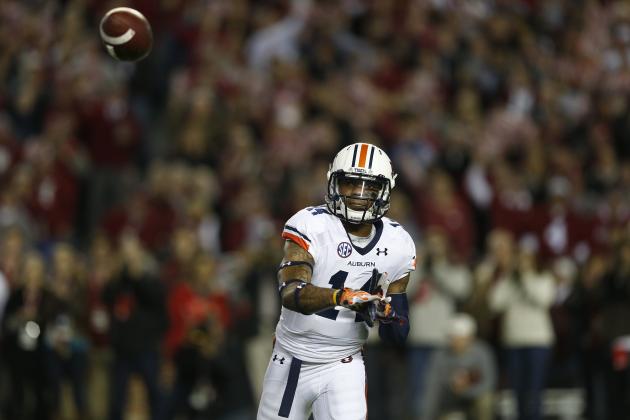


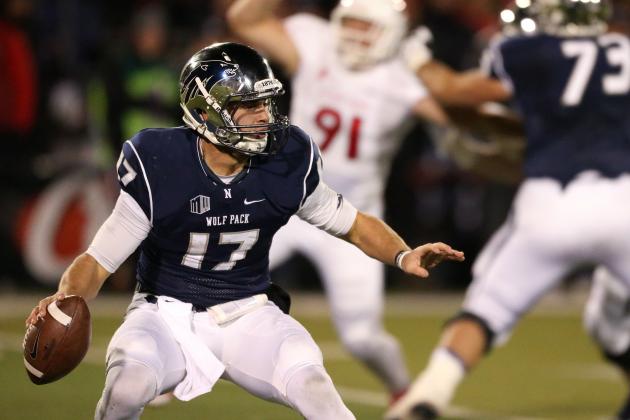
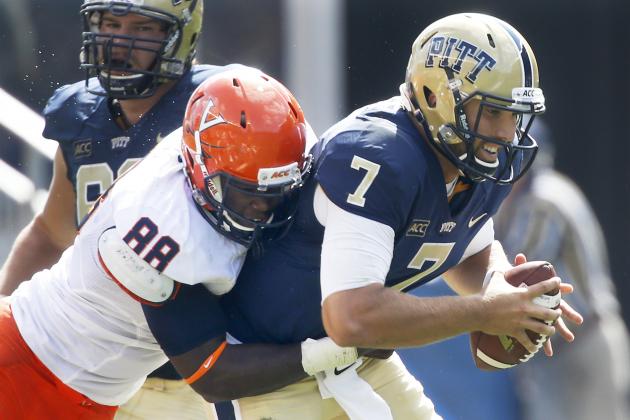


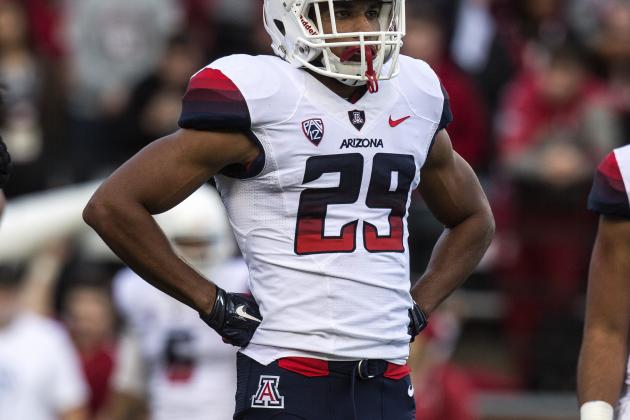
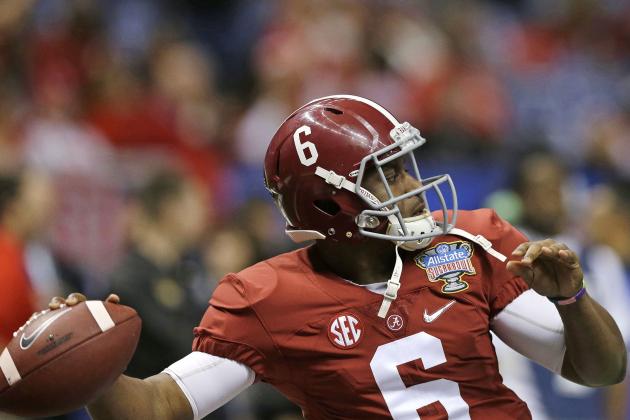
This entry passed through the Full-Text RSS service – if this is your content and you’re reading it on someone else’s site, please read the FAQ at fivefilters.org/content-only/faq.php#publishers.